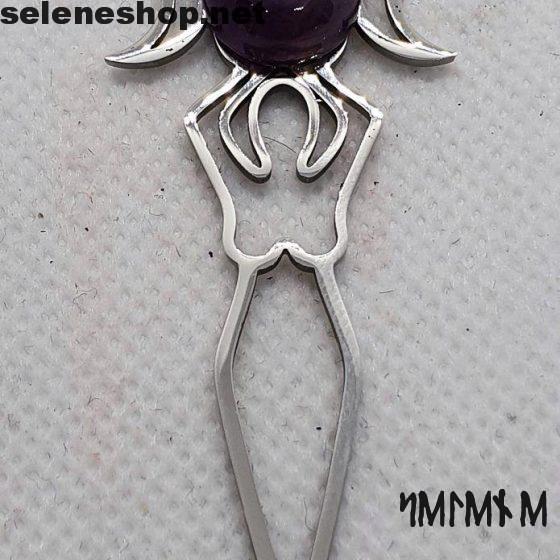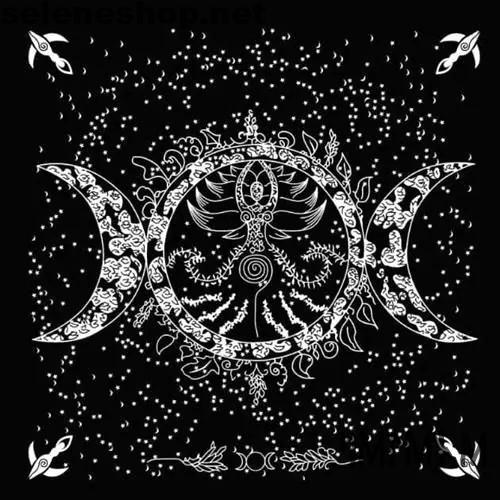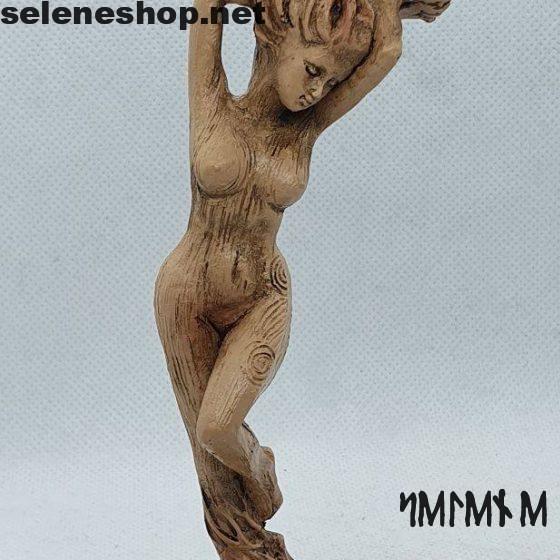Description
Danu triple Irish goddess statue
Measurements: 16x8x8 centimeters
Material: bronze color touch-up resin
- Impressive detailed statue depicting the triple goddess representing the connection of the divine feminine to the cycles of nature standing in front of a tree that gives life
- The finely sculpted colored finish makes this statue a unique piece.
Although viewed primarily as an ancestral figure, some Victorian sources also associate her with the land.
The hypothetical nominative form of the name, * Danu, is not found in any medieval Irish text, but is rather a reconstruction by modern scholars based on the genitive Danann (also spelled Donand or Danand), which is the only form attested in the primary sources (eg in the collective name of the Irish gods, Tuatha Dé Danann “Tribe of the gods of Danu”). In Irish mythology, Anu (sometimes referred to as Anann or Anand) is a goddess. It could be a goddess in her own right or an alternate name for Danu.
The etymology of the name has been the subject of much debate since the 19th century, with some earlier scholars favoring a connection with the Vedic water goddess Danu, whose name derives from the Proto-Indo-European root * dʰenh₂- “run, flow” , which could also be the basis of the ancient name of the Danube river, Danuuius, perhaps of Celtic origin, although it is also possible that it is an ancient Scythian loan in Celtic.
Linguist Eric Hamp rejects traditional etymologies in his 2002 examination of the name Danu and instead proposes that * Danu derives from the same root as the Latin bonus (ancient Latin duenos), from the Proto-Indo-European * dueno- “good”, via a proto-Celtic nominative singular with stem n * Duonū (“aristocrat”).
Danu has no surviving myths or legends associated with her in any of the medieval Irish texts.
It has possible parallels to the Welsh literary figure Dôn, whom most modern scholars regard as a mythological mother goddess in medieval tales of the Mabinogion. However, Don’s gender is never specified in the tales and he was regarded as a man by some medieval Welsh antiquarians.
The closest figure in Irish texts to a “Danu” would therefore be Danand, daughter of Delbáeth. In Lebor Gabála Érenn: The Book of the Taking of Ireland, it is noted that the Tuatha Dé Danann take their name from the three sons of Danand: Brian, Iuchar and Iucharba. These three are known as the “Gods of Dannan”. However, the Cormac Glossary, a text that precedes the Lebor Gabala Erenn, names the goddess Anu as the mother of the gods.
Danu and Anu are occasionally described as the same figure, but their associations indicate that they are probably not the same deity at all. Anu is most commonly associated with the land (ref: Paps of Anu) while Danu is typically associated with rivers and running water. Danu has also been mistakenly linked as one of the aspects of The Morrigan.














Reviews
There are no reviews yet.